Horrifying truth of fur industry revealed in footage from largest ever undercover investigation involving dozens of farms where animals engaged in cannibalism, had limbs gnawed off and were left with maggot-infested wounds
The horrifying truth about the fur industry has been revealed in footage from the largest ever undercover investigation into European fur farms.
The chilling exposé entitled ‘This is Fur Farming in the EU’ exposes the grim reality of the fur industry in six EU countries.
The harrowing material, captured by independent animal rights researchers during more than 100 farm visits, shows animals such as minks, foxes and raccoon dogs in disturbing conditions.
You can see injured animals struggling to survive in cages covered in feces, some infested with maggots or missing patches of fur, eyes and limbs.
Images also show dogs involved in cannibalistic acts and bodies piled in containers.
An injured white mink. The chilling exposé entitled ‘This is Fur Farming in the EU’ exposes the grim reality of the fur industry in six EU countries
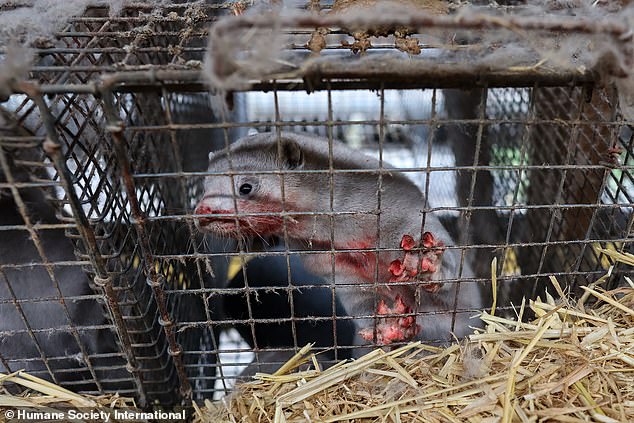
You can see injured animals fighting for survival in cages. The moving material was captured by independent animal rights researchers during more than a hundred farm visits
The footage was released exclusively to animal protection groups Oikeutta eläimille and Humane Society International.
Kristo Muurimaa, from Oikeutta eläimille, said: ‘EU leaders must open their eyes to the horrific suffering of animals on fur farms. There is no humane way to produce fur, so as long as fur farming practices continue, more shocking images like this will inevitably emerge. It’s time to put an end to this cruel industry for good.”
Animal welfare concerns raised by the research include cannibalism among mink, which are naturally solitary animals; injured and deceased animals confined in cages with other animals; animals with visible bloody injuries, missing some limbs, tails or ears; serious eye infections; and disturbing cases of self-harm.
The research took place on farms in Finland, Poland, Lithuania, Latvia, Spain and Denmark.
On all farms, animals were found in small, bare and unsanitary cages, where cases of cannibalism were often documented and injured, dead and dying animals were discovered next to their cage mates.
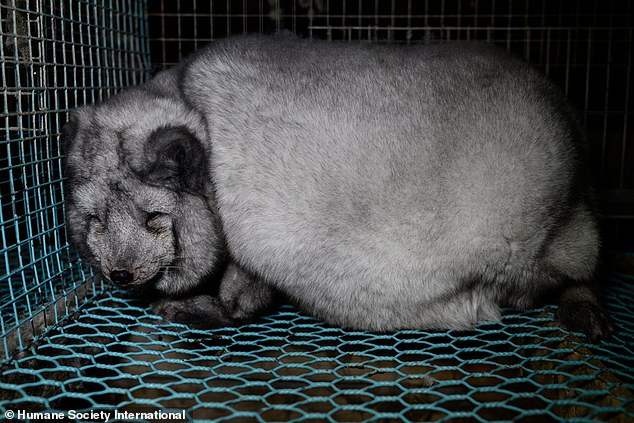
The creatures seen in the images are being held in disturbing conditions
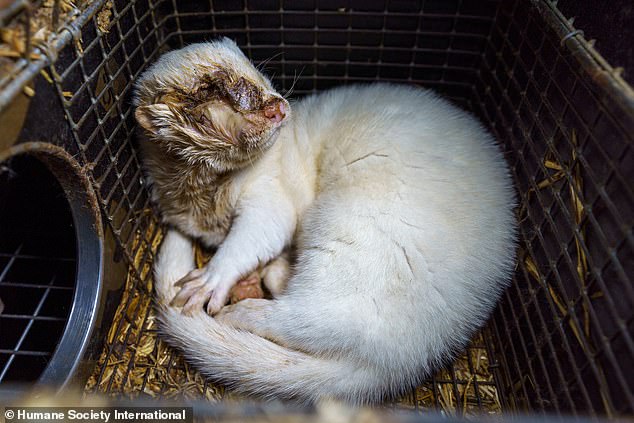
A white mink with part of its face missing
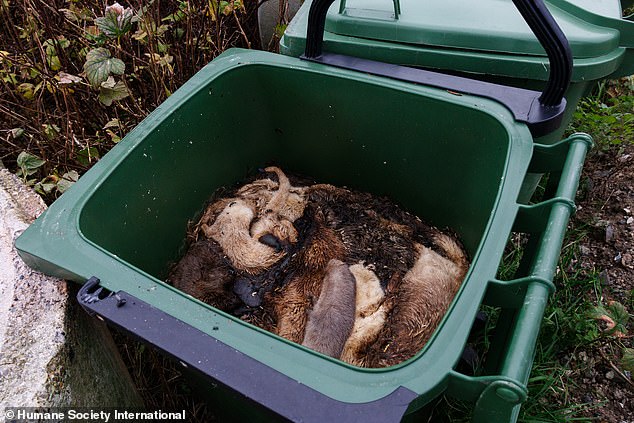
Piles of bodies in a container
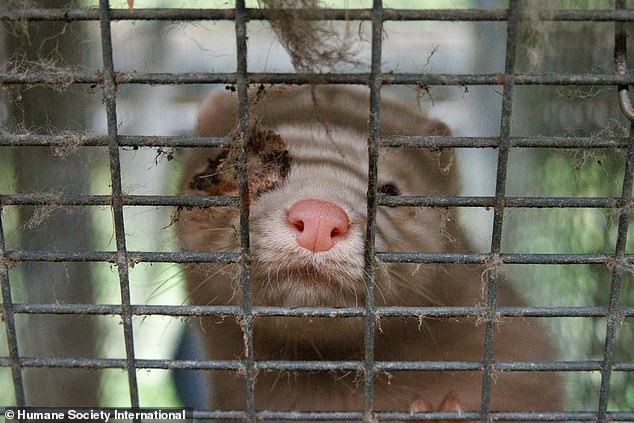
A white mink is missing an eye
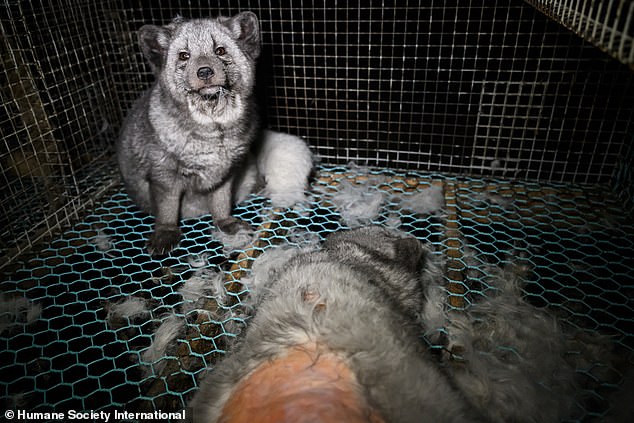
Video shows animals missing large chunks of fur
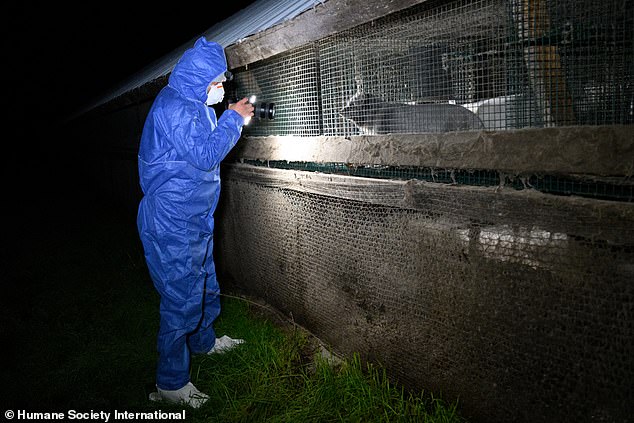
A researcher on one of the farms studied
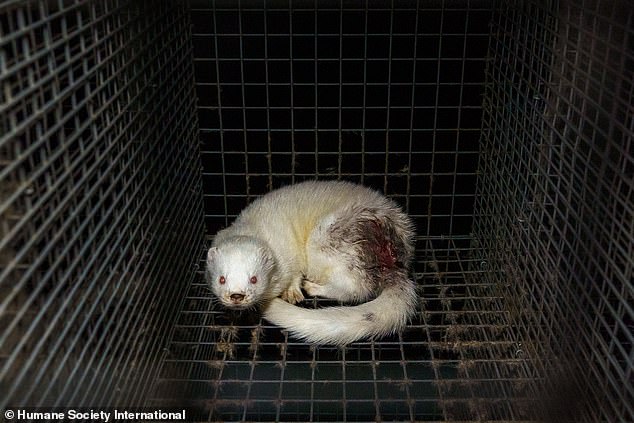
An injured white mink
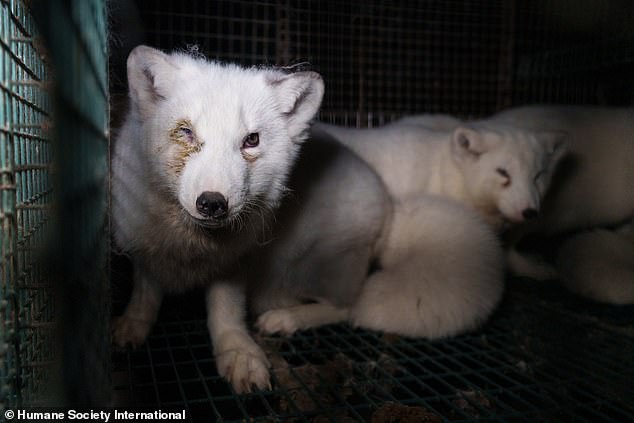
A dog missing an eye
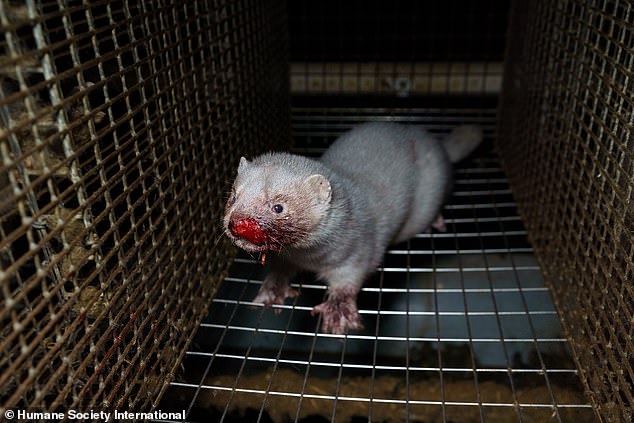
A white mink with its nose missing
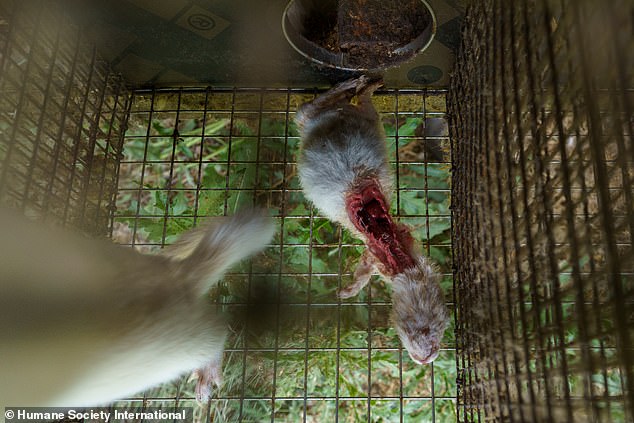
A ferocious white mink
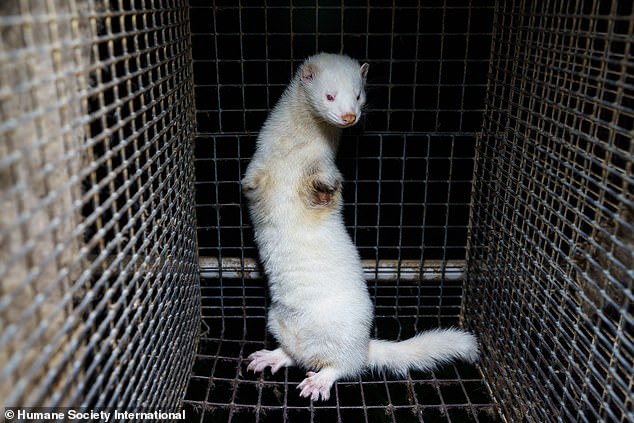
A white mink missing a claw
According to Humane Society International, the extent of animal suffering and welfare violations of EU Directive 98/58/EC, on the protection of animals kept for agricultural purposes, was consistent across countries and farms.
Dr. Joanna Swabe, senior director of public affairs at Humane Society International/Europe, said: ‘This shocking research shows that fur farming in the EU subjects animals to unspeakable suffering and must be banned.
‘This damning evidence shows that no matter which EU country you look at, animals on fur farms are subjected to suffering that our EU leaders should be ashamed of.
‘The European Commission has a clear opportunity to put an end to this abhorrent industry and we urge it to do so quickly and decisively by putting forward a proposal to ban fur farming in the EU.’
It comes as the European Commission considers its response to a European Citizens’ Initiative petition with 1.5 million signatures calling for an EU-wide ban on fur farming.
Twenty European countries, including fifteen Member States, have already introduced bans. However, according to Humane Society International, an estimated 10 million fur-bearing animals are still bred for fur fashion across Europe every year.
Around 100 million animals are used for fur each year worldwide, and around 10 million mink, foxes and raccoon dogs are raised and killed on fur farms across Europe in 2021 alone.
Twenty European countries have banned fur farming.
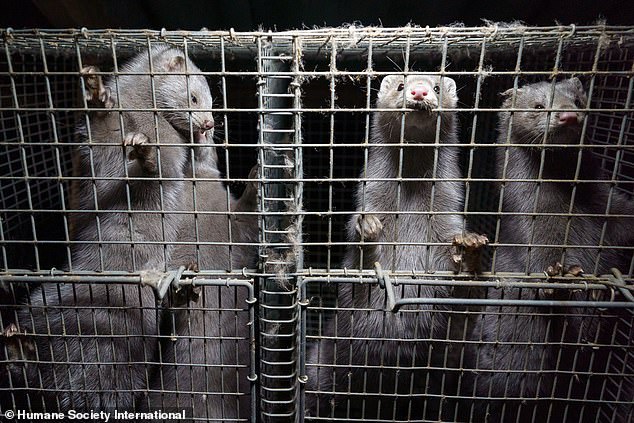
Mink are kept in cramped conditions on one of the farms
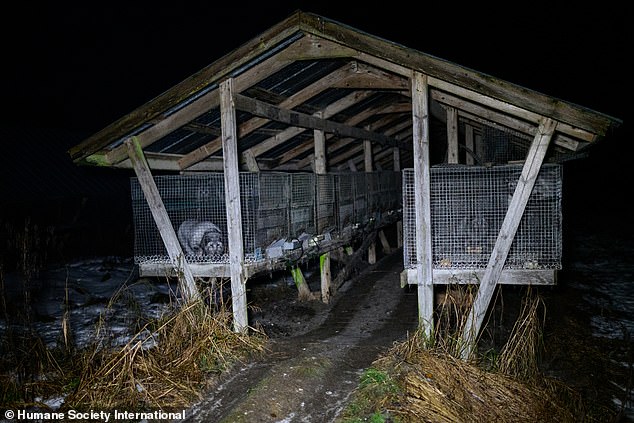
A row of cages on one of the farms
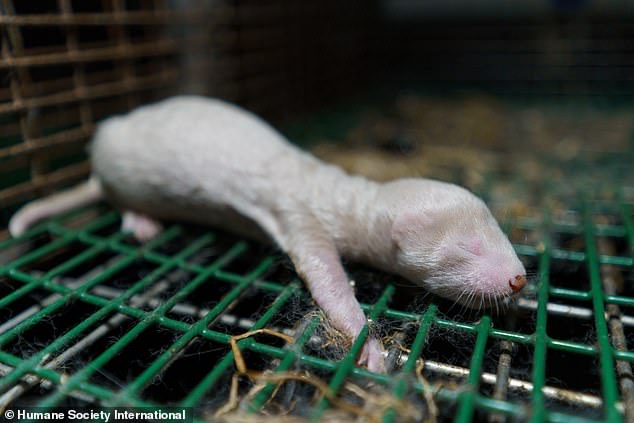
A white mink with facial deformity
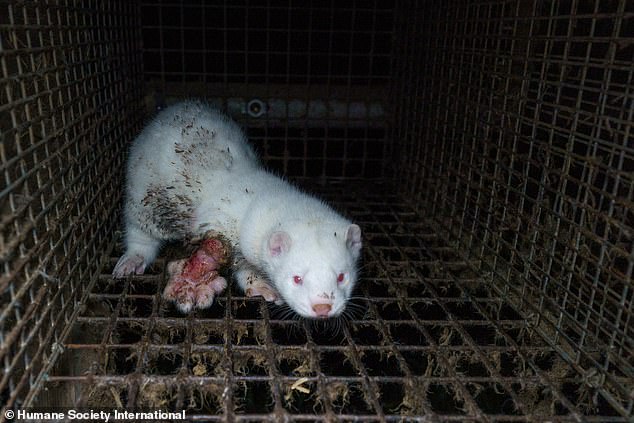
An injured white mink
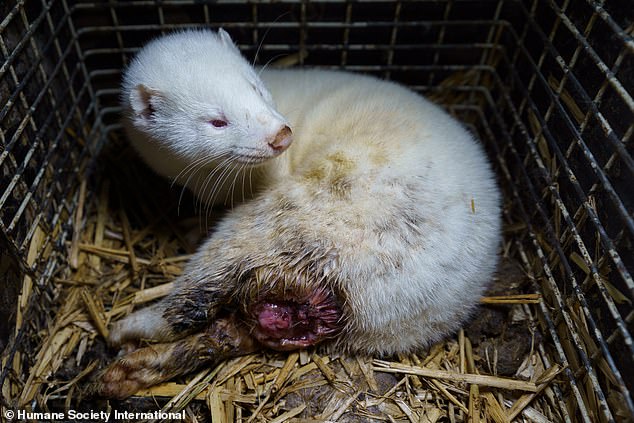
An injured white mink
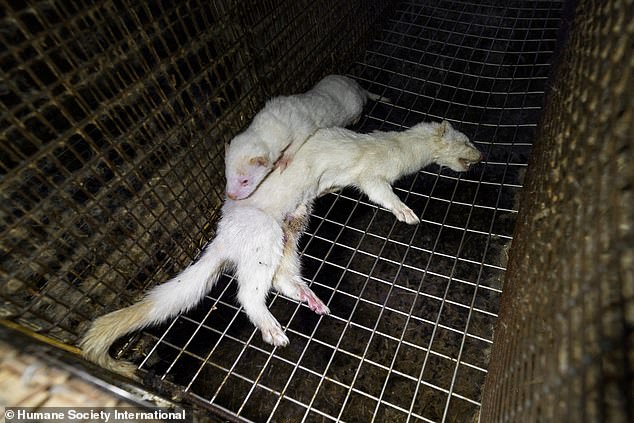
A dead white mink in a cage
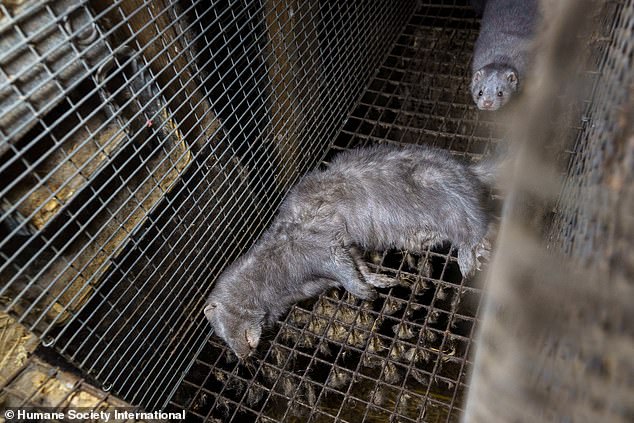
A dead animal in one of the cages
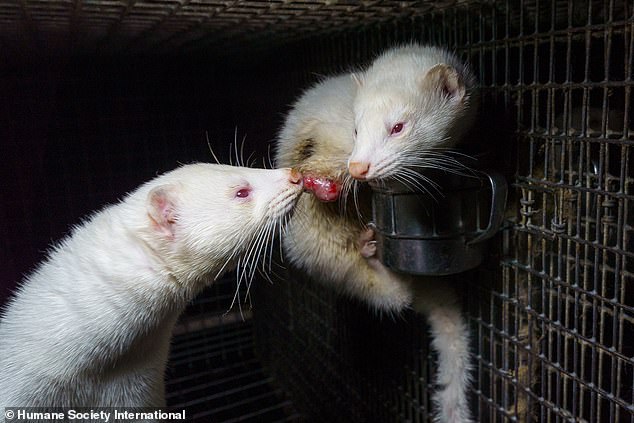
An injured white mink
Two other countries – Switzerland and Germany – have introduced strict regulations that have effectively ended fur farming, and three others – Denmark, Sweden and Hungary – have imposed measures that have ended fur farming of certain species.
Most of the world’s leading designers have adopted fur-free policies, including all six Kering fashion brands – Saint Laurent, Brioni, Gucci, Alexander McQueen, Balenciaga and Bottega Veneta – as well as names like Valentino, Prada, Armani, Versace, Dolce & Gabbana, Michael Kors, Jimmy Choo, DKNY, Burberry and Chanel.
Mink on more than 480 mink farms in 13 countries have been found infected with COVID-19, and the potential for the spread of zoonotic diseases on fur farms has been recognized by the World Health Organization.
In October 2022, an outbreak of highly pathogenic bird flu (H5N1) at a mink farm in Spain led influential virologists to call it “a warning bell” to end the practice immediately.
In recent months, Finnish authorities have ordered the killing of nearly 300,000 foxes, mink and raccoon dogs over public health concerns following outbreaks of the virus at more than 30 fur farms in the country.
Leading virologists recently warned of the public health threat posed by fur farming and called on governments to ‘consider the mounting evidence suggesting that fur farming should be eliminated in the interests of pandemic preparedness’.
